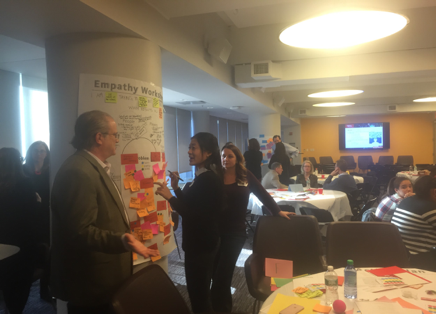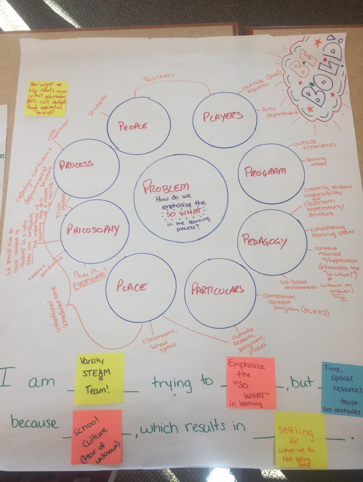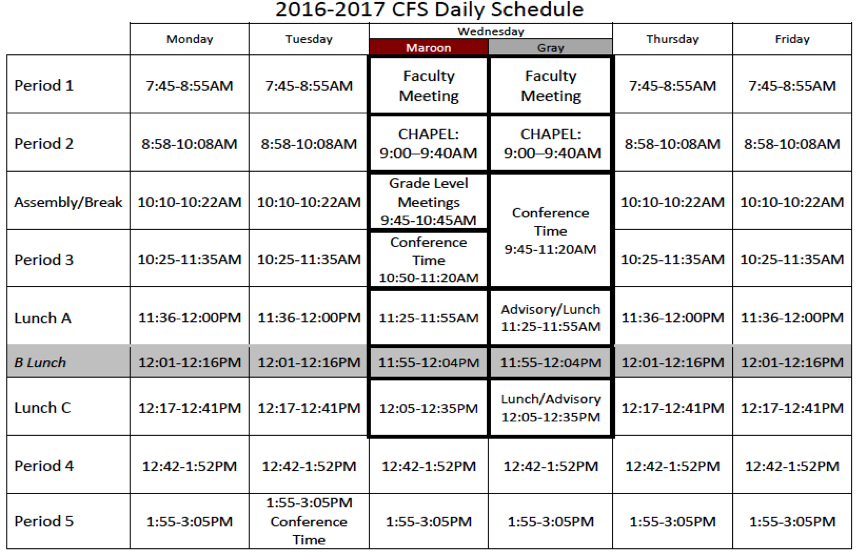Guest post by Doug Magee, Dean of Curriculum Innovation and Design at the Church Farm School
“STCs’ e2e Symposium proved to be an important catalyst in our change process as I took this work back to the CFS community.”
Last winter, I spent an afternoon with a group of Church Farm School high school students talking about their dream school. Mohammed, a junior, remarked, “We are boarding school students, we are at school 24/7, the most important thing for students is relationships. If you have a good relationship with a teacher, you really learn.” Added Dawrin, “I think we should have specific requirements, but broad opportunities that are connected to the real world to help us achieve them.” “Schools should pay more attention to the mental health of students,” said Tim. After laying all of their ideas on the table, we began to prototype the ideal high school experience for a CFS student.
As Church Farm School enters its 99th academic year, we are looking toward our next 100 years of educating young men of ability and promise by providing them access to a college preparatory boarding school education. One of the blessings of working at a school that is almost a century old is the rich tradition that grounds our community. One of the greatest challenges of working at a school that is almost a century old is those very traditions. Our faculty has worked hard to modify our school schedule in order to provide students with opportunities to gain 21st century skills and experiences. For years, we have operated in schedule with 45-minute rotating periods. Conversations around modifying the school schedule and program have always been framed by certain legacy constraints – a change here might impact a piece of the program over there. As a result, we settled for making small modifications to our existing schedule which only really sustained barriers to change.
During the fall of 2015, our school completed a self-study in preparation for our upcoming Middle States Association accreditation visit. A talented team of CFS educators crafted a thoughtful report on the state of the school by gathering data, identifying gaps in performance and creating performance objectives to guide future progress. We leveraged our accreditation opportunity to think anew about the future of a CFS education and how to design a program that would be the catalyst for accomplishing our collective goals.
 I had the good fortune of bringing this work to Schools That Can’s Fall 2015 e2e Symposium. I was matched with a cross-sector team of collaborators that would help me work through the following question: How might we design an individualized learning experience that both meets students’ diverse needs and enables them to engage in experiential learning? My design team consisted of the following members: Deborah Chang (Nexus Works), Elizabeth Werbe (New School), Jurate Krokys (American Paradigm Schools), Edward Hui (Newark Public Schools), Lloyd Nimetz (4.0 Schools), Peter Herzberg (Boys Prep), and Michael Druckman (STC). We moved through a rapid human-centered design process to develop a deeper understanding of our challenge. The team worked to empathize with my experience and refined my role as “a school leader trying to provide students with individualized learning pathways and experiential learning, but teacher space to collaborate and experiment, is an obstacle because of a rigid schedule and 24/7 work environment, which results in lack of year-to-year improvements in students outcomes and achievement.” This process led to a second iteration of our design question, “How might we reimagine the 24 hours of a school day to meet the needs of students and teachers?”
I had the good fortune of bringing this work to Schools That Can’s Fall 2015 e2e Symposium. I was matched with a cross-sector team of collaborators that would help me work through the following question: How might we design an individualized learning experience that both meets students’ diverse needs and enables them to engage in experiential learning? My design team consisted of the following members: Deborah Chang (Nexus Works), Elizabeth Werbe (New School), Jurate Krokys (American Paradigm Schools), Edward Hui (Newark Public Schools), Lloyd Nimetz (4.0 Schools), Peter Herzberg (Boys Prep), and Michael Druckman (STC). We moved through a rapid human-centered design process to develop a deeper understanding of our challenge. The team worked to empathize with my experience and refined my role as “a school leader trying to provide students with individualized learning pathways and experiential learning, but teacher space to collaborate and experiment, is an obstacle because of a rigid schedule and 24/7 work environment, which results in lack of year-to-year improvements in students outcomes and achievement.” This process led to a second iteration of our design question, “How might we reimagine the 24 hours of a school day to meet the needs of students and teachers?”
During the ideation phase of the design loop, schedule and staff development emerged as key buckets to organize change ideas. In the scheduling bucket, we identified flexible time, project time and common planning as key change ideas. In the staff development bucket, we identified creating a staff needs assessment and consistent professional development strategy around project-based learning as critical. These priorities influenced a rapid prototyping session which led to the following scheduling concepts:
- Common planning time for departments, grade levels and cross-curricular projects.
- Expanding our notion of the academic day to include evening study hall. Evening “school” is used for personalized online learning.
- Consider ways to make the academic spaces more communal and the residential spaces more academic.
- Create pathways to group students by interest and not grade level: STEM, Humanities and the Arts.
 STCs’ e2e Symposium proved to be an important catalyst in our change process as I took this work back to the CFS community.
STCs’ e2e Symposium proved to be an important catalyst in our change process as I took this work back to the CFS community.
After hosting a positive accreditation visit in November, our faculty was well-positioned to take practical steps to make our vision a reality. Our faculty spent a day working together in design teams in order to explore how a new schedule concept might help us accomplish our performance outcomes. Teams created prototypes for an extended orientation week, a four-year integrated humanities curriculum, an alternative Wednesday schedule with opportunities for collaboration and a two-week Winterim for deep dive into project-based learning.
Our Curriculum Committee and Department chairs then worked to distill all of these models into a single prototype. We had the good fortune to invite friend and colleague Lisa Abel-Palmeri to campus to help facilitate this process. It has been great to work with Lisa through the Schools That Can network after first crossing paths as members of the National Association of Independent Schools Teachers of the Future cohort. In keeping with our human-centered design approach, Lisa walked us through several protocols to clearly articulate key principles for our schedule. We identified the following scheduling principles:
- Create time and space for deeper learning
- Develop clear standards of excellence
- Build personalized learning pathways for students= knowledge + skills
- Build personalized learning pathways for adults = collaboration + individualized PD
- Maximize face-to-face & personalized learning time in a residential setting.
- Limit transitions
- Institute more student-centered community time
We then began to create schedule prototypes based on these principles. We presented various prototypes of administration, faculty and staff before settling on our new schedule for the 2016-2017 school year. Here is a summary of the major changes:
- Classes will meet for 70 minutes three times a week in order to promote opportunities for deeper learning, create less transition and allow students to consolidate skills.
- Student Life programming on Tuesday evenings with a social and emotional learning curriculum.
- Alternative Wednesday schedule which includes a faculty meeting while students sleep in, chapel and then an open block for a variety of meetings: grade level, advisory, conference time and project-based learning time.
- We expanded orientation weekend for new students to orientation week for all students. The goal of orientation week is to increase a student belonging through relationship building.

As the 2016-2017 school year begins, we start the ambitious process of living into this new reality. Last year we began to build systems to support our faculty in the implementation of this new schedule. We redesigned our observation and coaching protocol to feature 6-8 mini observations per cycle with immediate coaching feedback as an alternative to one summative observation and evaluation. We designed a New Schedule Playbook to articulate program goals, highlight best practices and curate resources. Finally, our faculty committed to having an open door policy in order to increase communication, collaboration and collegiality. While we are only one week into the school year, we will be closely monitoring our student experiences. Our human-centered approach to designing a new schedule with students at the center of gravity is possible because of our many partners that believe our students CAN and will transform the world.

